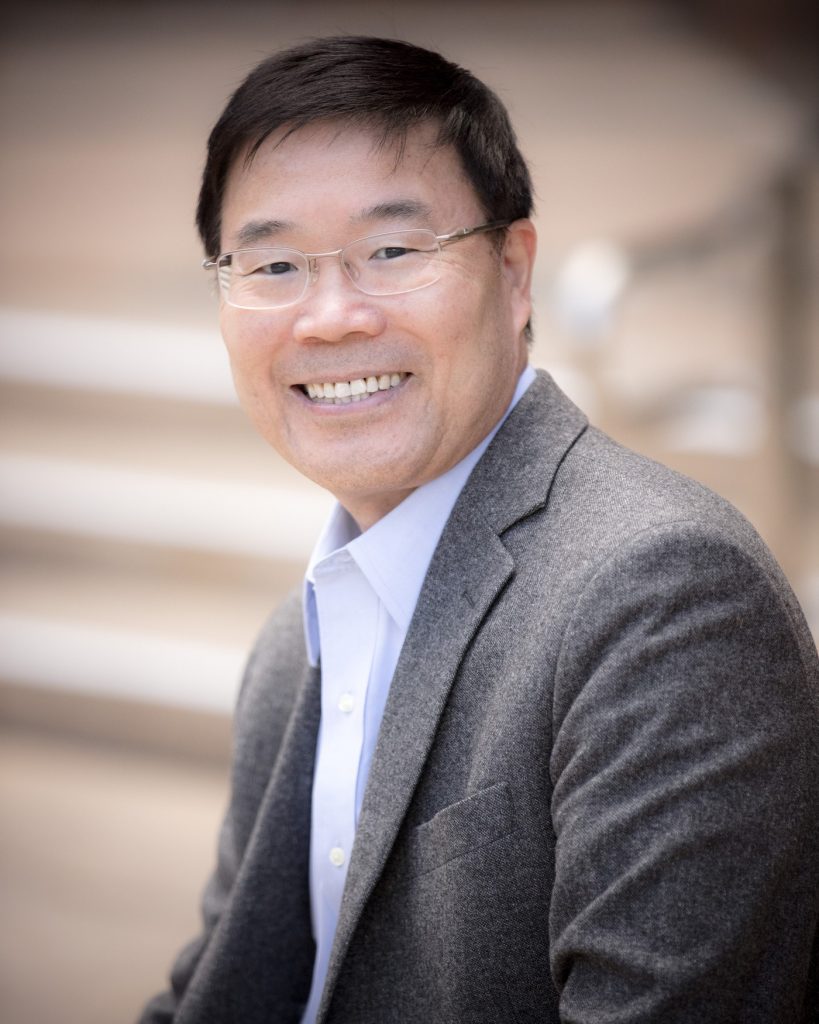Xiaoqing Pan
Henry Samueli Endowed Chair in Engineering
Professor, Materials Science and Engineering
Professor, Physics and Astronomy
Director, Irvine Materials Research Institute (IMRI)
Director, Center for Complex and Active Materials – an NSF MRSEC
| Location: | 644F Engineering Tower |
| Email: | xiaoqing.pan@uci.edu |
| Phone: | (949) 824-2368 |
| Fax: | (949) 824-2541 |
| Address: | The Henry Samueli School of Engineering University of California, Irvine Irvine, CA 92697-2575 |
Profile
Pan is internationally renowned as a materials scientist and electron microscopy expert due to his pioneering development and applications of novel transmission electron microscopy (TEM) methods for probing the atomic-scale structure, properties, and dynamic behaviors of materials. His work has led to the discoveries of new materials and novel functionalities. He received the National Science Foundation’s CAREER Award and the Chinese NSF’s Outstanding Young Investigator Award. He is an elected Fellows of the American Ceramic Society, American Physical Society, Microscopy Society of America, and the Materials Research Society. He has published over 400 peer-reviewed scientific papers in high impact factor journals such as Nature, Science, and Nature Materials with a high citation rate. Pan is currently the Henry Samueli Endowed Chair in Engineering, Professor of Materials Science and Engineering, and Professor of Physics & Astronomy at UCI. In addition, he is the inaugural Director of the Irvine Materials Research Institute (IMRI), and founding Director of the Center for Complex Active Materials (CCAM – an NSF MRSEC). He was a Professor and the Richard F. and Eleanor A. Towner Endowed Chair of Engineering, and Director of Electron Microbeam Analysis Laboratory at the University of Michigan before joining UCI.
Education
PhD, Universität des Saarlandes, Germany, 1991
Research
Pan’s current research focuses on the synthesis and atomic-scale characterization of multifunctional materials with an emphasis on probing atomic-scale structure and properties of material interfaces and nanostructures under controlled boundary conditions and environments. His group’s goal is to obtain a fundamental understanding of the atomic level structure-property relationships of nanoengineered materials, especially oxide heterostructures, ferroelectrics/multiferroics, nanocatalysts, and two-dimensional (2D) functional materials. More recently, his group is developing novel four-dimensional scanning transmission electron microscopy and momentum-resolved vibrational electron microscopy to probe atomic-scale structure, chemical, and physical properties of single-atom catalysts, 2D strongly correlated oxides, ferroelectrics/multiferroics, and complex concentrated materials with multiple principal elements.

